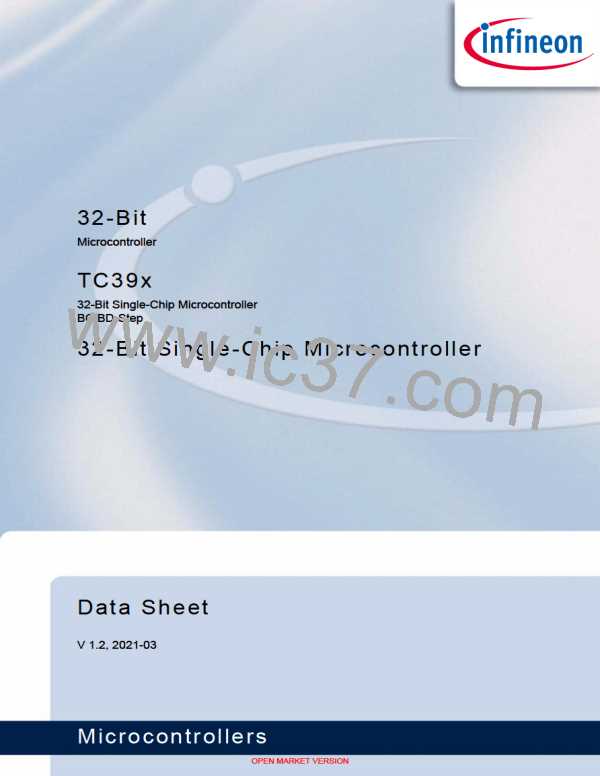TC39x BC/BD-Step
Pin Definition and Functions: Sequence of Pads in Pad Frame
Table 2-63 Pad List (cont’d)
Number
Pad Name
Pad Type
X
Y
Comment
575
P15.2
FAST / PU1 / 175644
VEXT / ES
753237
General-purpose I/O
576
577
578
579
580
581
P15.0
P15.1
P15.3
P15.4
P15.6
P20.9
FAST / PU1 / 322614
VEXT / ES
706239
659241
558441
457641
356841
256041
General-purpose I/O
General-purpose I/O
General-purpose I/O
General-purpose I/O
General-purpose I/O
General-purpose I/O
FAST / PU1 / 175644
VEXT / ES
FAST / PU1 / 175644
VEXT / ES
FAST / PU1 / 175644
VEXT / ES
FAST / PU1 / 175644
VEXT / ES
FAST / PU1 / 175644
VEXT / ES
Whenever in table of section 3 ’Electrical Specification’ the term ‘neighbor pads’ is used, the detailed definition is
provided by Figure 2-63. This statement is also valid for next/nearest neighbor pads.
In order to find out who is affecting operation on a target pad (interfering) a number of active close-neighbor pads
(ACNP) has to be defined.
Finding close-neighbor pads.
The Pad Ring has four edges: bottom, left, top, right. Each edge is limited, i.e. it has two ends.
Each pad has two direct (first) neighbors unless it is located at the end of the edge. In that case it only has one
neighbor. Similarly, each pad has two indirect (second) neighbors unless it or its first neighbor is located at the
end of the edge. These first and second neighbors we will collectively call Close-Neighbor pads. Therefore each
pad has 2 to 4 close-neighbor pads.
Finding close-neighbors can be done with the following sequence:
1.) Choose a target pad and lookup its “X” and “Y” coordinates in table Figure 2-63.
2.) Find first and second neighbors by calculating “X” and “Y” distance from the selected pad. Figure 2-63 is sorted
by “Y” coordinate, which might help locate the 4 close-neighbor candidates (if the pad is near the edge, it might
end up with less than 4 close-neighbors).
Defining active pads:
Pad is active if it is currently in use and if it doesn’t have “Vxx” in the name.
Figuring out number of active close-neighbor pads follow next rules:
- If the first neighbor is active, then we count it and also check if second neighbor (on the same side of selected
pad) is active.
- If the first neighbor is not active, then we do not check the second on the same side.
Data Sheet
402
V 1.2, 2021-03
OPEN MARKET VERSION

 INFINEON [ Infineon ]
INFINEON [ Infineon ]